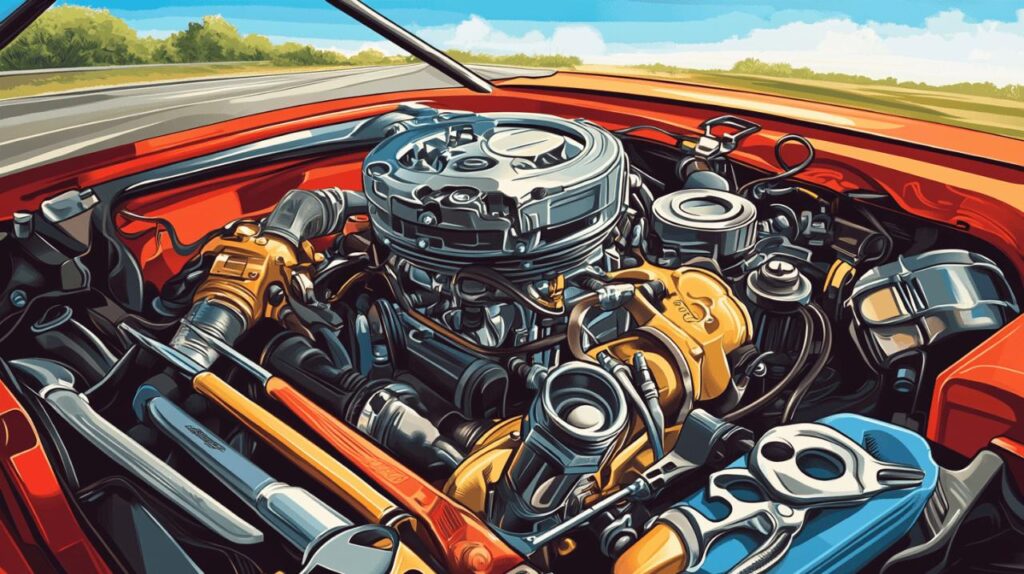Turbochargers have become increasingly prevalent in modern vehicles, with over 60% of new models featuring this performance-enhancing component. While these mechanical marvels can boost engine efficiency by up to 30%, they require specific maintenance to avoid common issues like whistling noises. Let's explore how you can keep your turbocharger in peak condition with these expert tips from industry professionals.
The importance of regular oil maintenance
When it comes to turbocharger health, nothing plays a more critical role than proper oil maintenance. Auto Service Gall experts emphasise that turbochargers operate at extraordinarily high speeds—often exceeding 150,000 RPM—generating immense heat that only quality oil can properly manage. Without adequate lubrication, bearing wear accelerates rapidly, leading to those distinctive whistling noises that signal trouble.
Selecting the Right Oil Grade for Your Turbocharger
Choosing the appropriate oil grade is fundamental to turbocharger longevity. Vehicle manufacturers specify particular oil formulations designed to withstand the extreme temperatures turbochargers generate. These high-performance oils typically feature enhanced thermal stability and detergent properties that prevent carbon deposits from forming. Consulting your vehicle manual or speaking with specialists at service centres like Essex Turbos can help determine the ideal oil for your specific turbocharger model.
Creating an optimal oil change schedule
For turbocharged vehicles, conventional oil change intervals simply will not suffice. Industry data suggests changing oil every 5,000 miles or less, significantly more frequently than naturally aspirated engines might require. This accelerated schedule may seem excessive, but workshop data compiled between 2020 and 2025 indicates that proper oil maintenance can extend turbocharger life by an impressive 40-60% compared to standard intervals. Remember to always replace the oil filter with each oil change to prevent contaminants from circulating through the system.
Air filter management for turbocharger health
The air filter serves as the first line of defence for your turbocharger, preventing harmful particles from reaching the delicate turbine blades. Even microscopic debris can cause imbalances that manifest as whistling noises and eventually lead to more serious damage. Regular inspection and replacement of air filters represent one of the most cost-effective preventative measures for turbocharger maintenance.
Signs your air filter needs replacement
Monitoring your air filter condition is crucial for maintaining optimal turbocharger performance. Decreased engine response, reduced fuel efficiency, or unusual engine sounds often indicate a clogged filter. Visual inspection can reveal dark discoloration or excessive dirt accumulation. Some modern vehicles feature air filter monitoring systems, but these should complement rather than replace regular physical checks. Technicians recommend inspecting air filters every 10,000 miles, though dusty environments may necessitate more frequent attention.
How debris affects turbocharger performance
When debris bypasses a compromised air filter, it creates a cascade of problems within the turbocharger system. Foreign particles strike turbine blades at high velocity, causing microscopic damage that compounds over time. This damage creates imbalances that force the turbocharger to work harder, generating heat and stress on bearings. The resulting vibrations often create whistling noises before progressing to more serious mechanical failures. Maintaining clean air intake systems helps preserve the precision engineering of turbocharger components, ensuring smooth, quiet operation.
Inspecting and Maintaining Hoses and Clamps
The pressurised air pathway created by your turbocharger relies on a network of hoses and clamps to direct airflow efficiently. Any compromise in this system creates air leaks that produce distinctive whistling noises while simultaneously reducing engine performance. Regular inspection of these components represents an essential aspect of comprehensive turbocharger maintenance that many vehicle owners unfortunately overlook.
Common Areas for Air Leaks in Turbo Systems
Certain connections within turbocharger systems prove particularly vulnerable to developing leaks. The junction between the turbo and intercooler frequently experiences pressure fluctuations that can stress connections over time. Similarly, the intake manifold connections and wastegate actuator hoses commonly develop cracks due to heat cycling. Boost pressure sensors and their associated vacuum lines require careful examination, as even pinhole leaks in these areas can create noticeable whistling sounds while triggering check engine warnings.
Tools and Techniques for Proper Hose Maintenance
Effective hose maintenance requires both visual inspection and pressure testing. A quality flashlight helps identify visible cracks or deterioration, while soapy water applied to pressurised connections reveals bubbles at leak points. Specialised electronic leak detectors can locate even the smallest air escape points in difficult-to-access areas. When replacing hoses, always select components rated for high-temperature applications, and ensure clamps meet or exceed manufacturer specifications. Properly torqued connections using calibrated tools prevent both over-tightening damage and under-tightening leaks.
Proper engine warm-up and cool-down procedures
How you start and finish your drive significantly impacts turbocharger longevity. Turbocharged engines benefit from specific operational procedures that allow oil to properly circulate and temperatures to stabilise gradually. These simple habits cost nothing to implement yet deliver substantial protective benefits to your turbocharger system.
The science behind turbocharger bearing protection
Turbocharger bearings experience their greatest wear during cold starts and immediate shutdown after high-speed operation. When an engine starts cold, oil pressure builds gradually, leaving bearings momentarily starved of lubrication if full throttle is applied immediately. Similarly, when an engine shuts down directly after highway speeds, the turbocharger remains spinning with residual heat but without circulating oil. These conditions accelerate bearing wear, creating the microscopic movement that eventually manifests as whistling noises. Manufacturer specifications typically allow for only 0.002-0.004 inches of bearing movement—anything more indicates deterioration.
Developing healthy driving habits for turbo longevity
Adopting turbo-friendly driving habits requires minimal effort yet yields significant benefits. Allow your engine to idle for 30-60 seconds after starting before applying heavy throttle, giving oil time to reach operating pressure and temperature. Similarly, after highway driving or heavy loads, permit your engine to idle for approximately 30 seconds before shutting down. This cool-down period allows the turbocharger to slow naturally while oil continues circulating, dissipating heat gradually. These simple practices help maintain proper bearing clearances and prevent oil coking within the turbocharger.
Addressing engine issues that impact turbocharger performance
Your turbocharger operates as part of an integrated system, meaning issues elsewhere in the engine inevitably affect turbocharger performance. Proactive maintenance of the entire engine helps prevent cascading problems that ultimately manifest as turbocharger whistling noises or failures. Understanding this interconnected relationship helps prioritise maintenance effectively.
Warning signs of engine problems affecting your turbo
Several engine symptoms indicate developing issues that will impact turbocharger performance if left unaddressed. Excessive oil consumption beyond the normal quart per 3,000-5,000 miles suggests potential problems with seals or rings that could allow oil into the turbocharger. Rough idling or misfires indicate combustion issues that create uneven exhaust flow through the turbine. Check engine lights, particularly those related to oxygen sensors or fuel trim, suggest air-fuel mixture problems that can affect turbocharger operation. Addressing these warning signs promptly prevents additional strain on turbocharger components.
Preventative Measures to Reduce Strain on Your Turbocharger
Beyond regular maintenance, several proactive steps help minimise turbocharger stress. Maintaining proper engine timing through scheduled belt or chain service prevents combustion irregularities that create turbine imbalances. Ensuring fuel injectors remain clean allows for optimal combustion that produces consistent exhaust energy. Following manufacturer recommendations for spark plug replacement maintains efficient combustion that reduces carbon deposits. For vehicles undergoing performance modifications, professional tuning from specialists like ASM Tuning helps balance power gains with turbocharger protection. These preventative measures help extend turbocharger lifespan toward the upper range of the expected 100,000 to 150,000-mile service life.





